 Overview
Overview
 Cao Bang
Cao Bang, the northern border region of Vietnam, stands out for its wild beauty and sparsely populated character. This mountainous area, which borders China to the northeast, is home to many ethnic minority communities. Although the Ban Gioc falls are now a sight for sore eyes, the area remains off the beaten track, preserving its authenticity and cultural richness. The landscapes are marked by mountains draped with dense forests, rice terraces and winding roads. Traditionally, the Vietnamese prefer the plains for agriculture, leaving the mountainous areas to ethnic minorities. Thus, the Nung, Dao, Tay and H'mong are the main peoples inhabiting these remote lands
 Top Attractions
Top Attractions
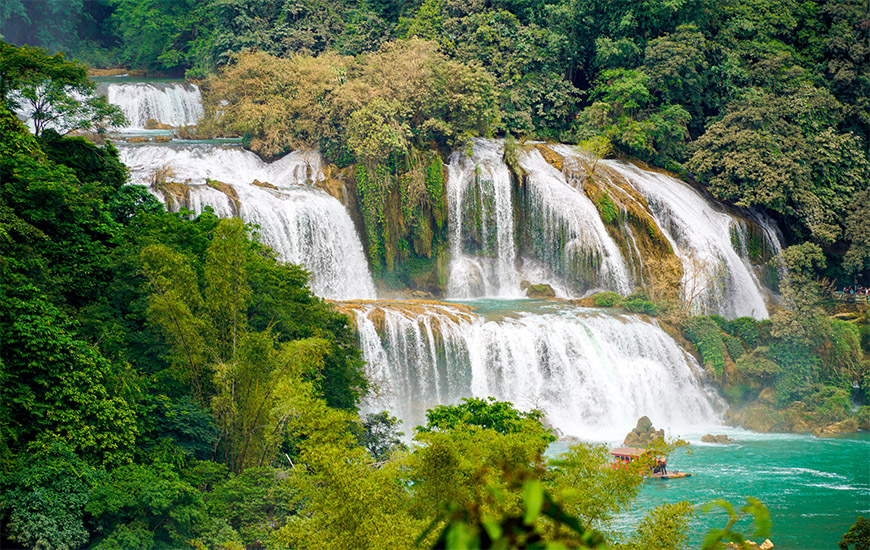
Ban Gioc Waterfall, Southeast Asia’s largest and most breathtaking falls - Mr Linh's Adventures
Bản Giốc Falls
Considered one of the most beautiful waterfalls in Southeast Asia, the Bản Giốc Falls, on the Sino-Vietnamese border, offer a grandiose spectacle.4 Their turquoise waters cascade in several levels in the midst of a lush landscape. A boat trip at the foot of the falls is an unforgettable experience.
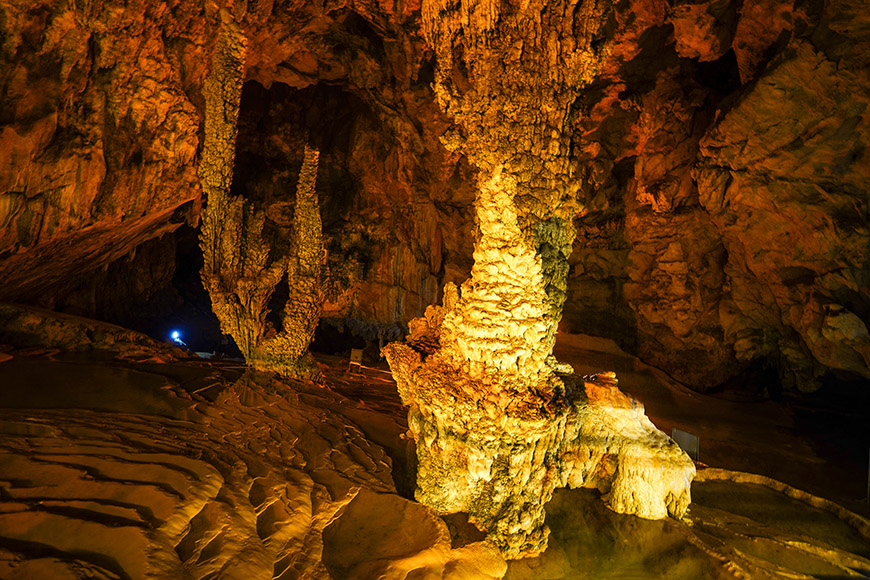
Nguom Ngao Cave is famous for its rock formations - Mr Linh's Adventures
Ngườm Ngao Cave
This vast cave, adorned with stalactites and stalagmites with impressive shapes, is a true masterpiece of nature. Its galleries extend over several kilometers, offering a fascinating journey into the heart of the earth.
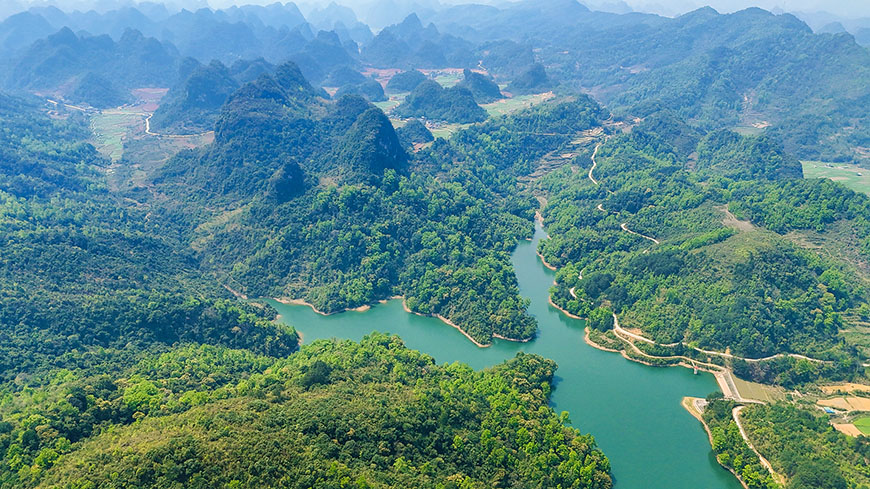 Thang Hen Lake, a jewel in majestic peaks - Mr Linh's Adventures
Thang Hen Lake, a jewel in majestic peaks - Mr Linh's Adventures
Thang Hen Lake
Nestled in the mountains, this emerald lake is a haven of peace.Its calm waters reflect the surrounding peaks, creating a landscape of striking beauty. Reflecting its diamond-shaped aerial view, which resembles a bee's tail, the lake is called Thang Hen, a term directly translated from the Tay language.
Thang Hen Lake belongs to a network of 36 interconnected natural lakes, maintained by underground rivers that ensure its year-round clarity.
A traditional boat trip on the lake is an excellent way to enjoy the tranquility of the place.
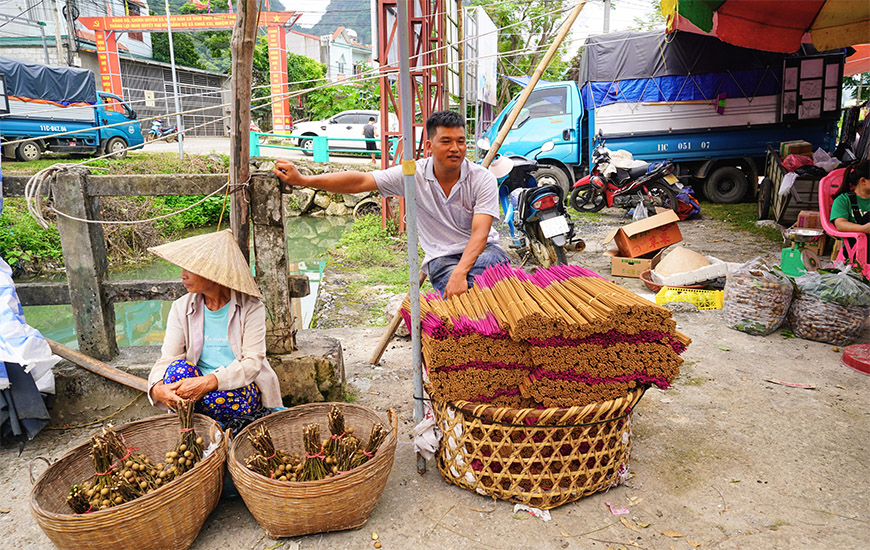
A local market in Cao Bang - Mr Linh's Adventures
Cao Bằng Market
Immerse yourself in the vibrant atmosphere of the local market, where you can discover local products, traditional crafts and meet the locals. It is an excellent opportunity to discover daily life in Cao Bằng and share authentic moments.
 See & Do
See & Do
Cao Bằng is an invitation to adventure, a territory with infinite explorations. Hiking enthusiasts will find their happiness on the countless trails that crisscross the mountains, revealing breathtaking panoramas. The more adventurous can try rock climbing, explore the depths of the caves or kayak on the winding rivers.
Witnessing the majestic and raw beauty of Ban Gioc Waterfall - Mr Linh's Adventures
The Ban Gioc Falls, a true jewel of Cao Bằng, are worth the trip alone. This majestic curtain of water, marking the Sino-Vietnamese border, falls from a height of 30 meters in an impressive crash, resonating through the landscape. The spectacle of this waterfall standing out from the surrounding mountains is simply grandiose and unforgettable.
The excursion to the Ban Gioc Falls is ideally extended by a visit to the Nguom Ngao cave, located nearby. Extending over more than two kilometers (of which only one is accessible to the public), this "tiger cave," long remained inviolate for fear of the felines that, according to legend, resided there, today reveals a striking spectacle. Far from any threat, visitors discover dazzling rock formations, stalactites and stalagmites with varied shapes evoking mythical creatures and fairytale scenes.
The pass of Ma Phuc and its spectacular turns - Mr Linh's Adventures
The area is wonderfully suited for motorcycle excursions, offering the opportunity to discover isolated villages and immerse yourself in the heart of local communities. One of the highlights is undoubtedly the crossing of the Ma Phuc pass, famous for its winding roads that wind through the mountains, along the route 3 connecting Cao Bang to Ban Gioc. Its name, which means "pass of the lying horses", comes from the rock formations that evoke the silhouettes of two equines at rest. Hiking the Ma Phuc Pass is an exhilarating experience, a real call to adventure, ideal for lovers of trails that offer breathtaking views of wild mountains and rivers meandering into deep valleys.
The Pác Bó cave owes its renown not only to its exceptional natural beauty; it is also a major historical site, having served as a refuge for Ho Chi Minh during his return from exile in China. A picturesque walk along Karl Marx Peak and Lenin Stream, named by Ho Chi Minh himself, leads to the entrance of this hiding place. The cave still retains traces of the simple life led by the leader, in the heart of striking karst formations. It is here that the national hero spent his days writing poems, reading and translating the works of the leaders he admired. The setting, a true invitation to contemplation, is of inspiring serenity, lulled by the song of birds and a peaceful atmosphere.
Dong Khe, witness of a bloody and decisive battle for the independence of Vietnam - Mr Linh's Adventures
Another major memorial site, the city of Dong Khe, which was the scene of a decisive battle for the independence of Vietnam. In October 1950, Route Coloniale 4, nicknamed «Route Sanglante» (Bloody Road), saw the French Expeditionary Corps decimated during the evacuation of the garrisons of Cao Bang and Lang Son, facing the advance of Mao’s troops. From the old citadel, there remains only a buried shelter and the remains of a bomb. Facing a small museum, the blockhouse in the southern part of the site is relatively recent construction, and the «popote» of the 8th RTM has been restored to testify to the living conditions of the soldiers. The glacis in the north hosts a silent Vietnamese cemetery, guardian of the anonymous graves of the fallen fighters here.
 Go Green
Go Green
Mr. Linh's Adventures offers tailor-made tours in the Cao Bằng region, designed for travelers seeking authentic experiences and encounters.7 Our tours emphasize the discovery of local culture, immersion in nature and sharing with communities. Whether you are interested in hiking, trekking, cultural encounters or motorcycle explorations, we have the tour for you.
 Heritage
Heritage
Cao Bằng is a land steeped in history, witness to many important events in Vietnam's history. The region is home to several historical sites, such as the Pac Bo site, where Ho Chi Minh returned to Vietnam in 1941 after 30 years of exile.
The Ky Sam temple, nestled in the village of Nung and surrounded by the majesty of ancient trees, offers a breathtaking dive into the tumultuous past of Cao Bang. Erected in homage to Nung Tri Cao, a hero of the independence of the 11th century, the temple evokes his fierce fight against the king Le Thai Tong. Inspired by the rebellion of his father and brother, Nung Tri Cao sought to establish an independent kingdom, Dai Lich. Despite his initial successes and bold attempts, including the conquest of part of China, he was eventually captured and executed. The Ky Sam temple, with its incense volutes rising through the branches, testifies to its heritage and its struggle for freedom.
During your visit to Cao Bang, a visit to the Phat Tich Truc Lam Ban Gioc pagoda is a must to admire the beauty of an emblematic spiritual place on the Vietnamese border. This jewel, the most picturesque in the region, offers a breathtaking view of the majestic stream of the Ban Gioc waterfall and the mesmerizing mountains of Chongqing. Founded in 2014, it is the first temple site erected on the border land of Cao Bang. Also known as the Truc Lam Ban Gioc Zen monastery, the pagoda follows the tradition of the Truc Lam Tam To sect. Behind its walls, a temple dedicated to the Mother Goddess and national heroes completes this place of contemplation.
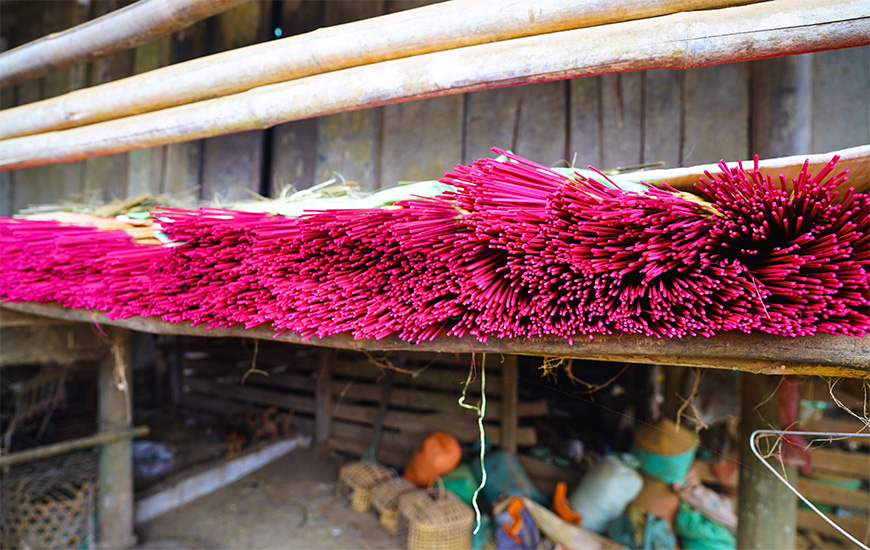
Incense sticks in the village of Phia Thap - Mr Linh's Adventures
On the road from Cao Bang to Trung Khanh, the village of Phia Thap, nestled at the foot of the Pha Hung mountain, reveals the authentic charm of the houses on stilts of the Nung An people. Here, the traditional manufacture of incense, handed down from generation to generation, Rhythm the village life. Free of chemicals, Phia Thap incense uses natural calebasse leaves as a binder.
Now open to community tourism, Phia Thap invites travelers to discover its art of living and participate in the creation of its unique incense, offering an immersive experience at the heart of Nung An culture.
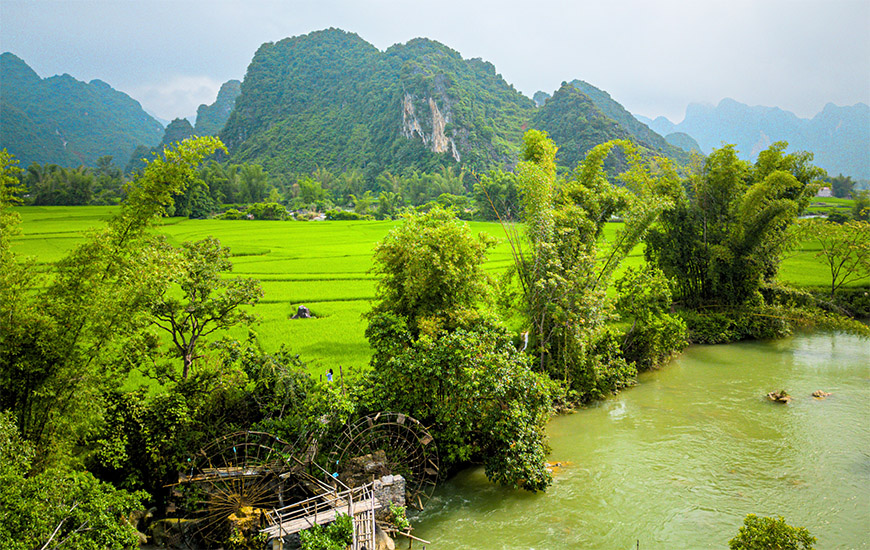
Breathtaking landscape of Cao Bang - Mr Linh's Adventures
The landscape of Cao Bằng, marked by steep mountains draped in dense vegetation, scattered rice paddies and narrow winding roads, reflects a history of human occupation. Traditionally, Vietnamese populations favored the fertile plains for agriculture, leaving the mountainous areas to
ethnic minorities, a situation that persists today. Cao Bằng is mainly home to the
Nung, the Dao, the Tay and the H'mong. This natural richness was recognized in April 2018 by UNESCO, which included Cao Bằng in its
Global Geoparks Network, the second Vietnamese site to receive this distinction.
The main ethnic communities
The Tày
The majority in Cao Bằng, the Tày possess a rich culture, characterized by their stilt houses, their traditional songs (Then), their colorful costumes and their lively festivals, such as the Long Tong festival, celebrating the beginning of the new agricultural year. Their language, Tày, is related to the Thai languages.
The Nùng
Also present in significant numbers, the Nùng share many cultural similarities with the Tày, particularly with regard to architecture and agricultural traditions. They are renowned for their crafts, especially weaving and the manufacture of agricultural tools. Their language is also related to the Thai languages.
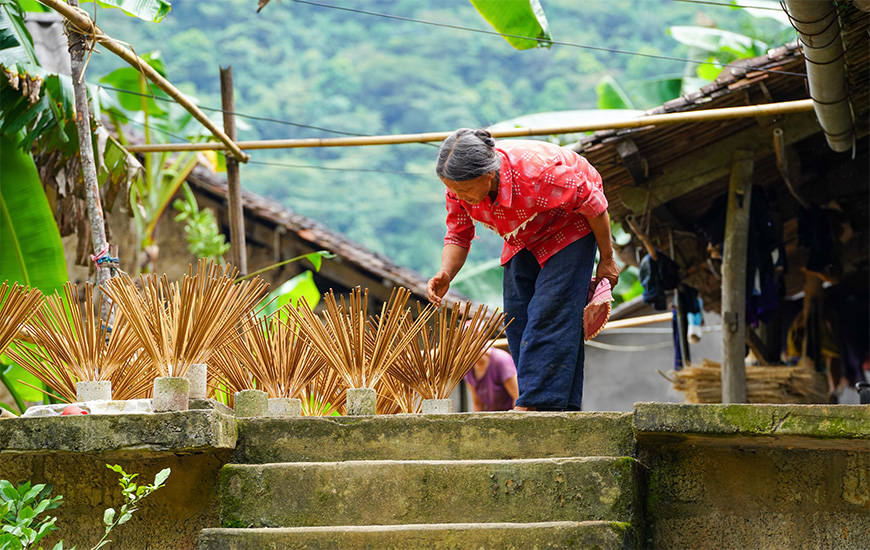
Nung women preparing incense, Phia Thap village - Mr Linh's Adventures
The Dao
Recognizable by their costumes adorned with elaborate embroidery and their distinctive hairstyles, the Dao are divided into several subgroups, each with its own customs and traditions.They practice slash-and-burn agriculture and are known for their knowledge of medicinal plants.
The H'Mông
Originating from the high mountains, the H'Mông arrived later in Cao Bằng. They are famous for their textile crafts, especially batik and embroidery, as well as for their colorful markets and traditional festivals, such as Tết Nguyên Đán (Lunar New Year).
Other groups: There are also Kinh (majority Vietnamese) and Hoa (Chinese) and San Chay communities, contributing to the cultural diversity of the region.
Cao Bang, rich in its minority ethnic communities, offers an authentic cultural immersion through its local markets. The Pac Mieu market, one of the most lively, is a meeting place where fresh products and traditional crafts meet. For a colourful experience, go on the 1st, 5th, 10th or 15th of the lunar month and discover the effervescence of this unique market.
 Food & Drinks
Food & Drinks
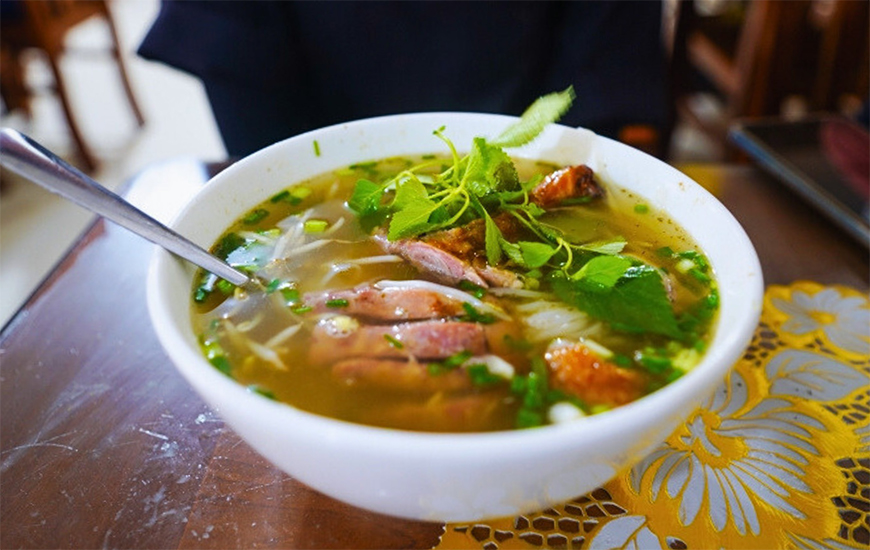
Iconic Pho chua Cao Bang - Mr Linh's Adventures
Cao Bằng's cuisine is like its region: authentic and tasty.
Local specialties include bánh cuốn nóng (steamed rice pancakes), khâu nhục (braised pork with five spices), lạp sườn (smoked pork sausage) and phở chua (sour noodle soup).
Cao Bằng offers a daring culinary experience with dishes incorporating insects. Among these, "Peng Ray," literally "ant egg cake," is a seasonal specialty of the Tay community, prepared between April and May. During this period, ant eggs are harvested in the surrounding forests and then wrapped in a glutinous rice cake and fig leaves. This dish is known for its nutritional richness.
Bees are also an original ingredient in local gastronomy. Their larvae, harvested in autumn, are fried with sour bamboo shoots or incorporated into a hot rice porridge.
Cao Bằng also has its own take on the traditional noodles soup pho. Pho chua Cao Bang has a sour soup with noodles, chunks of roasted duck, strips of bacon and peanuts. The meaty flavours are a great combination with the fresh, sour soup.
 Directions
Directions
Location
Cao Bằng is located in northeastern Vietnam, about 280 km from Hanoi.11
How to get there from Hanoi
Regular buses connect Hanoi to Cao Bằng. The journey takes about 7 to 8 hours and costs between 200,000 and 300,000 VND (about €8 to €12). It is also possible to rent a car with a driver or take a night bus.
Best season
The best time to visit Cao Bằng is from September to November and from March to May, when the weather is dry and pleasant. The rainy season extends from June to August.
Cao Bằng is an ideal destination for travelers seeking adventure, discovery and sharing. Come and live an unforgettable experience in the heart of authentic Vietnam!